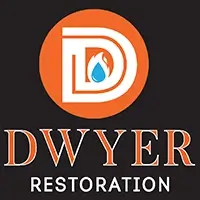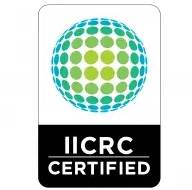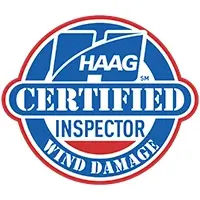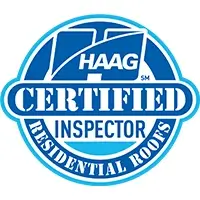FREQUENTLY ASKED QUESTIONS
One Call Does It All! From floor to ceiling we take care of it all! No job is too big or small!
General
“A deductible is the amount of a claim that you must pay yourself. For instance, if you have a $1,000 claim and your policy has a $300 deductible, the insurance company will deduct $300 from your claim amount and pay you $700. You have different deductibles for each type of coverage.”
– Texas Department of Insurance
– Texas Department of Insurance
“No. A deductible is part of your home insurance policy. It’s illegal for contractors to waive your deductible or help you avoid paying it.”
– Texas Department of Insurance
– Texas Department of Insurance
“Talk to your insurance company first. You can also report it to the Texas Attorney General’s Consumer Protection Hotline at 1-800-621-0508. Contractors who illegally waive deductibles could be fined or go to jail.”
“Texas law sets deadlines for insurance companies to act after you’ve filed a claim. Your company must:
Tell you that it got your claim within 15 days. The company may ask you for a signed, notarized proof of loss form. You’ll need to list your damaged or lost items. Don’t forget to include small items like kitchen utensils and bathroom accessories. The company may ask you for other information. To help the claim process go smoothly, provide all the information as soon as you can.
Send an adjuster to look at your damage. The adjuster will decide how much damage you have and estimate the cost to repair or replace your property. The insurance company will base its payment on the adjuster’s estimate. After the company assigns an adjuster to your claim, the adjuster will probably be your main contact with the company. If the damage turns out to be worse than the adjuster originally thought, you or your contractor can talk to the adjuster about raising the estimate.
Accept or deny your claim within 15 business days of getting all the information it needs from you. If the company denies your claim, it must tell you why in writing. The deadline may be longer after major disasters.
Send you a check within five business days after it agrees to pay your claim. If the insurance company doesn’t meet the payment deadline, you can sue the company for the amount of the claim, plus interest and attorney fees.
There are some exceptions to the deadlines:
Tell you that it got your claim within 15 days. The company may ask you for a signed, notarized proof of loss form. You’ll need to list your damaged or lost items. Don’t forget to include small items like kitchen utensils and bathroom accessories. The company may ask you for other information. To help the claim process go smoothly, provide all the information as soon as you can.
Send an adjuster to look at your damage. The adjuster will decide how much damage you have and estimate the cost to repair or replace your property. The insurance company will base its payment on the adjuster’s estimate. After the company assigns an adjuster to your claim, the adjuster will probably be your main contact with the company. If the damage turns out to be worse than the adjuster originally thought, you or your contractor can talk to the adjuster about raising the estimate.
Accept or deny your claim within 15 business days of getting all the information it needs from you. If the company denies your claim, it must tell you why in writing. The deadline may be longer after major disasters.
Send you a check within five business days after it agrees to pay your claim. If the insurance company doesn’t meet the payment deadline, you can sue the company for the amount of the claim, plus interest and attorney fees.
There are some exceptions to the deadlines:
“If you disagree with the adjuster’s estimate or the amount the company is offering to pay you, tell the insurance company why. You might be able to work things out by talking with the company or the adjuster. If that doesn’t resolve the issue, here are your options:
Ask for an appraisal. The appraisal process is for disputes about the amount of your claim. It isn’t for disputes about whether your policy covers a loss. If you use appraisal, you and the insurance company each hire an appraiser. The two appraisers then choose a third appraiser as an umpire. Your appraiser and the company’s appraiser each estimate the amount of your loss. If the estimates are different, the umpire makes the final decision. The umpire’s decision is binding on both you and the insurance company. You pay for your appraiser and half of the umpire’s expenses.
File a Complaint to the Texas Department of Insurance
Resolve your issue in court. You might have to file a lawsuit to resolve the issue. If the damage was caused by a disaster, you must tell the company in writing at least 61 days before you sue. You can give less notice if waiting would cause you to miss the deadline for filing a suit.
If your claim is for less than $10,000, you can use Justice Court. Justice Court is a special court that handles small-claims disputes. You don’t need an attorney, but you have to pay a filing fee and other court costs in advance. If you win, you can get that money back. For more information, call your county justice of the peace office.”
– Texas Department of Insurance
Ask for an appraisal. The appraisal process is for disputes about the amount of your claim. It isn’t for disputes about whether your policy covers a loss. If you use appraisal, you and the insurance company each hire an appraiser. The two appraisers then choose a third appraiser as an umpire. Your appraiser and the company’s appraiser each estimate the amount of your loss. If the estimates are different, the umpire makes the final decision. The umpire’s decision is binding on both you and the insurance company. You pay for your appraiser and half of the umpire’s expenses.
File a Complaint to the Texas Department of Insurance
Resolve your issue in court. You might have to file a lawsuit to resolve the issue. If the damage was caused by a disaster, you must tell the company in writing at least 61 days before you sue. You can give less notice if waiting would cause you to miss the deadline for filing a suit.
If your claim is for less than $10,000, you can use Justice Court. Justice Court is a special court that handles small-claims disputes. You don’t need an attorney, but you have to pay a filing fee and other court costs in advance. If you win, you can get that money back. For more information, call your county justice of the peace office.”
– Texas Department of Insurance
No, while it’s likely your insurance policy will only owe to go back to a “Pre-Loss” state, Dwyer Restoration will guide you through the material selections and change orders before the commencement of repairs. This is where folks often see the “Silver Lining” and take the opportunity to correct or alter items in the home that they have always wanted.
With many years of experience in the industry, Dwyer Restoration, Inc is the trusted name in restoration in the greater area. Our IICRC-certified technicians follow industry-standard procedures for quality you can count on. We offer 24-hour emergency service and can work directly with your insurance provider to make the process as easy as possible for you.
Insurance coverage is very situationally dependent. Each policy from each different company will have different levels and types of coverage. The best way to know if your damage is covered is to keep a copy of your policy on hand and call your agent directly with any questions you might have.
Seeing your home damaged is extremely stressful as a homeowner, and it’s difficult to know the right course of action. Will trying to clean up on your own help or just make things worse? No matter what kind of damage you’ve incurred, the very first thing you should do is take photographs as long as the area is safe for you to be in. If you have water damage, the best thing to do is extract as much standing water as you possibly can while you wait for help. If you have fans, set them to start drying things as much as possible. They won’t be enough to dry the area completely, but they can help to minimize the chance of secondary damages. In the event of mold or fire, it’s best to just leave the damage alone until a professional can address it. Disturbed mold can disperse spores throughout the home, and fire damages can worsen if improper cleaning techniques are used.
The length of time for proper restoration to occur is dependent on the type and size of the damage. A typical water damage project usually takes 5-7 days to dry and remove any unsalvageable materials. Mold remediation can take anywhere from a few hours to several days, depending on the extent of the damage. Fires cause the most extensive damage and can take weeks for restoration to be completed. Keep in mind these are all estimates, and they’re only for the restoration portion of the job. The rebuilding portion of the job, where everything is put back into place, has its own separate process and timeline.
Most homeowners’ policies cover most water damages, but not all water damages are created equal. There can be a lot of exceptions to coverage depending on the intricacies of your policy. This is why it’s a good idea to be familiar with your policy and call your agent immediately when damage occurs.
A good portion of water damage can be prevented by proper household maintenance. Routine plumbing maintenance, sump pump, and appliance maintenance are effective ways to avoid preventable damages. Preparing your home for the winter can also help avoid damage if you live in a cold climate. Finally, it’s a good idea to regularly check the exterior of your home, particularly your roof, for damage to ensure water isn’t unexpectedly leaking into your home.
Roof Repair
We can repair any roof – from securing loose shingles or flashing, replacing missing or damaged shingles, to rebedding ridge caps, to replacing water-damaged roof decks. Dwyer Restoration, Inc has a team of experienced roofing contractors who can repair any roof damage you may be experiencing.
Damaged roofs cause roof leaks, which creates a dangerous water and moisture problem in the house below. Whether the roof damage was caused by hail or fallen trees to simply granule loss due to aging roof shingles, prompt attention and repair will avoid further, more costly damage down the road.
Yes! Our experienced, licensed roofers will inspect your roof up close to assess the scope of any obvious damage and also map out the probable unseen damage just below the surface. With that knowledge at hand, we will let you know if roof repair is the most affordable option or if you’re better off with a full roof replacement.
Roof Installation
The pricing for new roofs depends primarily on the square footage of the roof surface, the type of material you choose (asphalt, metal, cedar shakes, tile, etc.), and the complexity of your roof (dormers, steep angles, etc.) Because we’ve been installing new roofs in the San Antonio area for so many years, we have the experience and resources to help you decide on a quality roof solution that will suit your budget.
While there could be some initial cost-saving in laying new shingles over an old, aged roof, we generally don’t recommend re-roofing. Old shingles also mean an old roof deck. By tearing off the old shingles, our licensed roofing contractor can spot any areas of instability or damage to the roof deck that the shingles may have hidden. We can replace any sections where there may be wood rot. Roof installation techniques and materials have also changed over the last couple of decades, and your old roof may not be up to code. “Re-roof” jobs may also not carry the same warranties as a full replacement.
When you decide it’s time to consider a new roof, consider your budget and goals first. Metal roofs tend to last longer than asphalt shingles, but they cost more upfront and may not “fit in” with the neighborhood. Asphalt shingles are an affordable option, but even in that arena, choices will determine the roof’s overall aesthetic and potential lifespan. Consulting a roofing contractor to help you make these choices is best. They’ll have the experience to help guide you toward the best result.
Water Damage
Water damage insurance claims depend on a few different criteria. Ultimately, that’s a question you’ll have to clarify with your insurance company. However, we can tell you that the viability of water damage insurance claims depends primarily on what caused the damage (storm, burst pipe, plumbing malfunction, localized flood, sump pump failure, etc.). Some insurance policies will outline scenarios that will NOT be covered without specific riders, like flood insurance or sump pump failure insurance.
Contacting a restoration contractor and your insurance adjuster at the same time is a good idea because the restoration contractor will help ensure that the water extraction and dry out and the rebuild process that should follow. If the full scope of the claim isn’t outlined and agreed upon from the start, there may be issues down the line, and property owners may have to pay out of pocket to get the property completely back to normal.
Contacting a restoration contractor and your insurance adjuster at the same time is a good idea because the restoration contractor will help ensure that the water extraction and dry out and the rebuild process that should follow. If the full scope of the claim isn’t outlined and agreed upon from the start, there may be issues down the line, and property owners may have to pay out of pocket to get the property completely back to normal.
That depends on the types of materials that were affected by water. Drywall, carpet, and hardwood floors will take longer to dry than other materials in the space. We use moisture meters throughout the process and in many different locations to gauge the moisture levels and will continue to adjust our fans and dehumidifiers to achieve an efficient but effective dry time. The bare minimum of “three days to dry” may only produce a surface dry but can still leave behind moisture levels that create an ideal environment for mold to grow.
Most homeowners start trying to remove the water themselves before they realize they’ll need to contact their insurance company about a claim so they can call in a water damage restoration company. However, standing water around anything with a power cord or outlet or sagging ceilings makes the area unsafe. Also, many insurance claims require documentation of the loss BEFORE any work is done, including removing the water. Always take plenty of photos of the damage you see before taking any action to start cleaning up the mess. Your restoration contractor will also be able to back up your insurance claim scope with the necessary technical documentation.
If the water damage involves Category 1 water (clean and free of microbes and bacteria), many of your personal belongings can be salvaged. Category 2 water would include other water sources, including rainwater, that, while not containing biohazards or sewage, still pose health risks and the potential for destructive microbial growth and mold. A water damage restoration technician will help you sort through the property’s contents to determine what can be safely dried, what can be restored by a textile/contents technician, and what can’t be saved or salvaged. There are off-site facilities in the area that specialize in restoring water-damaged contents. Your restoration team will document all of the contents leaving the property for restoration or disposal for your records and also for reimbursement from your insurance company.
Identifying the source of the water damage is one of the first steps in both the insurance claim process and before beginning to dry out and repair the damaged areas. After all, if you replace a sagging, wet ceiling caused by a roof leak but doesn’t fix the roof, the next rainstorm will start the cycle all over again. The buckling to your hardwood floor could be caused by a leaking pipe. We will pinpoint your water damage’s exact cause and ensure the source is repaired. We make sure your restoration job is done right the first time.
Fire Damage
It’s never a quick fix, though we’ve gathered together a multi-disciplined team of contractors and technicians to work in tandem to complete the work as soon as possible. From structural repairs to sand/soda-blasting to odor removal to contents cleaning, our fire damage restoration crew begins as soon as the project scope is determined, and we don’t stop until the job is done and both you and the insurance company are satisfied with the results.
Most often, yes. You’ll need to check your specific policy for the full scope of coverage, but generally, if the damage was caused by a flame, it’s covered. Your best bet is to hire a professional restoration to help you through the claims process. We know how to avoid some common missteps when it comes to making sure the entire loss is documented and covered. Many homeowners and insurance companies forget, for instance, to consider that your HVAC system will need to be cleaned of soot, and since fires are extinguished using water, many areas of your home may need to be restored due to water damage even if they weren’t directly affected by the fire.
Depending on the extent or location of the fire damage, some homeowners can move back in a few days or longer. The fire department will usually turn off electricity and gas to the property immediately, which won’t be restored until a building inspector says it’s safe to turn those utilities back on. If you experienced significant smoke damage and the home’s occupants include elderly persons, young children, or those with chronic health conditions, you may be wise to stay until the smoke cleanup is complete. Contracting with a company experienced in fire damage restoration can often get you back home sooner because they’ll have the resources to hire and manage the many tradespeople who will need to work together to make the home liveable again.
DIY soot removal is not recommended. Commercially available products can actually cause permanent damage to surfaces. Soot itself is primarily oil-based, but that residue also contains toxic, possibly biohazard contaminants.
Smoke damage is rarely limited to one area of the house, and it leaves behind a residue that can hide in crevices and out-of-reach areas, and a simple “airing out” may not be sufficient. We recommend consulting with a smoke damage technician who can help you troubleshoot the next steps.
WHY CHOOSE DWYER RESTORATION, INC
- 100% Satisfaction Guaranteed
- Experienced and Specialized in Disaster Restoration
- Licensed and Insured
- Highly-trained Staff
- HAAG Certified Roofer





